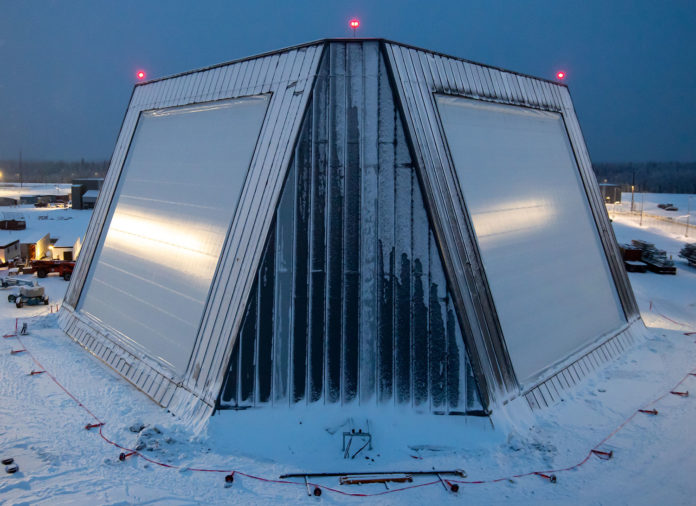The U.S. Missile Defense Agency (MDA) has completed the military construction and installation of radar arrays for the Long Range Discrimination Radar (LRDR).
The LRDR is a multi-mission, multi-face radar with a wide field of view. Placed at Clear Space Force Station in Alaska, each of the massive arrays measure 60 feet high by 60 feet wide. Advanced gallium nitride technology makes this radar more powerful, more capable, more persistent, and more reliable than currently available radars.
Once fully operational, the radar station operating in S-band frequencies will provide unparalleled ability to simultaneously search and track multiple small objects, including all classes of ballistic missiles, at very long ranges, under continuous operation. The new long-range discrimination radar will be powerful enough to discriminate or identify lethal objects, such as warheads, allowing the U.S. to successfully intercept such objects.
LRDR features a scalable, open systems architecture designed to mitigate evolving threats. In addition to missile defense, MDA said the long-range radar will also support space domain awareness by monitoring satellites orbiting the earth, detecting, tracking, and identifying active or inactive satellites, spent rocket bodies, and fragmentation debris. Adaptable to future threats, the radar can be scaled and extended to counter evolving threats without changing the hardware design.
MDA will integrate the radar into the Ground-Based Midcourse Defense system (GMD) and the Command and Control, Battle Management and Communications (C2BMC) system during 2022 in preparation for formal operational acceptance by the U.S. Air Force in 2023.
